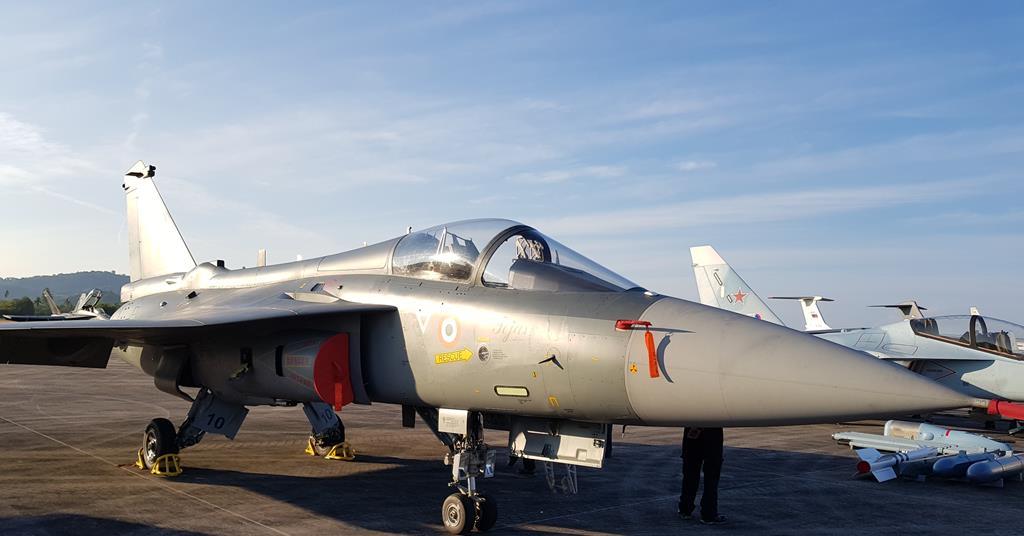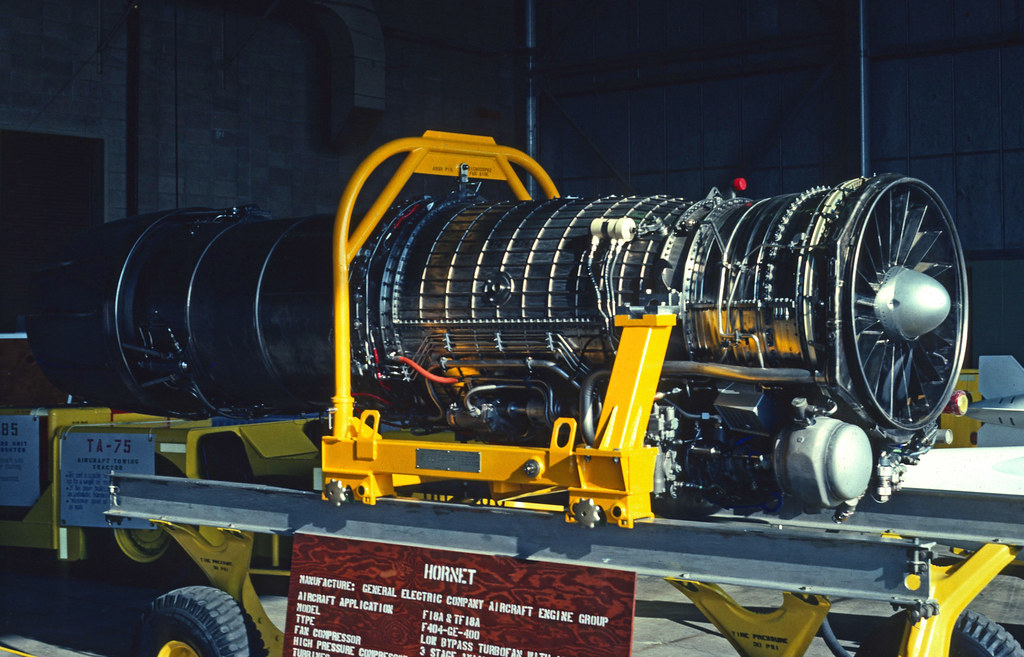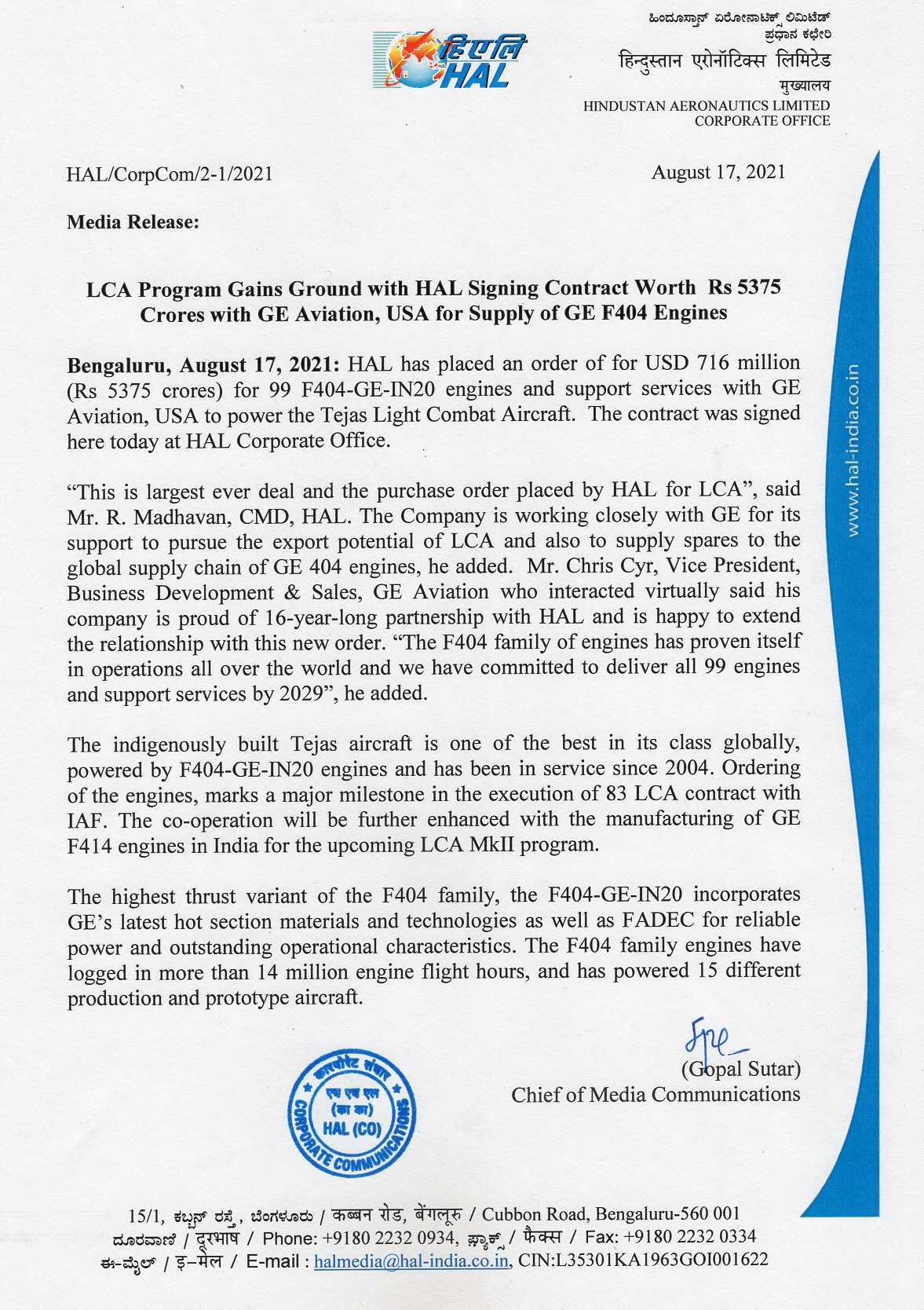It will be hard to take off at that length unless the deck is fitted with EMALSSounds great, the only concern is if it can take off from a shorter deck. TCG Anadolu is about 230 meters long.
Considerably shorter than the indian aircraft carrier.
Latest Thread
You are using an out of date browser. It may not display this or other websites correctly.
You should upgrade or use an alternative browser.
You should upgrade or use an alternative browser.
India HAL Tejas Program
- Thread starter Rajendra Chola
- Start date
If I remember correctly, Hürjet's latest updated length was 13.6m and the wing area was increased from 24m2 to 32-34m2 but what is the reason of 3 different aircrafts powered by the same engine and having similar wing areas (Gripen-E/F: 30m2, Tejas Mk1: 38m2) have such different payload values?
I'm guessing it could be a result of the number of hardpoints & how the wings are engineered?
Even though the plane with that engine is capable of higher payloads, it may not be able to carry more than a set amount at a particular point in the wing, limiting the overall capacity? The Tejas Mk1's hardpoint layout for example is far less efficient than the Gripen's (something HAL hopes to fix with Mk2), its likely Hurjet suffers from the same, to a more severe degree.
Just guessing though, I'm no aeronautical engineer.
Sounds great, the only concern is if it can take off from a shorter deck. TCG Anadolu is about 230 meters long.
Considerably shorter than the indian aircraft carrier.
I'm thinking not...but even if it could, the payload penalty would be too much.
Any other fighter is also likely to face the same problem but some improvement could be noticed if the weight of the aircraft itself were to be considerably lesser (like at least 3-4 tons lighter).
@Cabatli_53 tejas mk1 have been tested for weight more than 5.5 tons to bear , problem is space between hardpoint and effect on twr of aircraft
Actually aircraft don't takeoff from full length , it take off from shorter predefined run way .Sounds great, the only concern is if it can take off from a shorter deck. TCG Anadolu is about 230 meters long.
Considerably shorter than the indian aircraft carrier.
If full length of tcg tarkaya is used it can very well takeoff and land .
But that increase issue like space for other jet to be in standby etc .
Emals if used can solve the issue .
But imo , any jet without high twr like f 22 won't be suitable for takeoff and landing on such small stripe without a risk
If I remember correctly, Hürjet's latest updated length was 13.6m and the wing area was increased from 24m2 to 32-34m2 but what is the reason of 3 different aircrafts powered by the same engine and having similar wing areas (Gripen-E/F: 30m2, Tejas Mk1: 38m2) have such different payload values?
L/D ratio of the wings (esp for regular cruise) plays some part in it....along with what Gessler mentions.
More conventional wing design has higher L/D ratio compared to delta wing....so the former inevitably almost always have better range and endurance for similar wing area (this affects your payload envelope too).
It is evidenced in Mirage 2000 specs as well (compare to say Gripen). i.e differences even among delta wing designs overall L/D.
The advantages of a delta wing (why they are chosen) lie elsewhere.
i.e its a tradeoff analysis for the platform.
Last edited:
Last month, HAL had placed a $716 million order for 99 x F404-GE-IN20 afterburning turbofan engines from General Electric of US. This order goes toward fulfilling the $6 billion contract HAL received from the IAF earlier this year for 83 Tejas Mk-1A multirole fighters. The "IN20" is the highest-thrust variant of the F404 engine family and comes with FADEC. Engines of a similar configuration were already contracted previously to power the 40 jets of the Mk-1 standard ordered so far (and most of which delivered). The 99 new engines will go toward powering 73 single-seat Mk-1As, 10 twin-seat trainer variants plus 16 spares.
The two sides also planned to produce the higher-thrust class F414 engine in India, which is earmarked for the Tejas Mk-2, twin-engine TEDBF as well as next-gen AMCA fighter programs.

 www.flightglobal.com
www.flightglobal.com

Official press release:

The two sides also planned to produce the higher-thrust class F414 engine in India, which is earmarked for the Tejas Mk-2, twin-engine TEDBF as well as next-gen AMCA fighter programs.

HAL orders 99 F404 engines to support Tejas production
Hindustan Aeronautics (HAL) has signed a $716 million order with GE Aviation covering 99 F404-GE-IN20 engines to power its Tejas Mk-1 Light Combat Aircraft (LCA).

Official press release:

No wonder it's fairly on the expensive end along with an American engine and certain Israeli sub-systems. Now that we've already developed, integrated and tested indigenous versions of the avionics & EW suite, Uttam AESA radar and certain other sub-systems which are most likely to be assembled in Mk-2...it should definitely help controlling the costsThe composite materials content on the LCA is extremely high among fighter aircraft - surpassed only by the EF Typhoon.
From a Boeing publication:
View attachment 33404
For a compact fighter, that's a large number of ailerons. IIRC, India developed its own flight control system, right?Some of the best shots in my collection of the NLCA NP-2 (single-seat prototype):
View attachment 30228
View attachment 30229
View attachment 30230
View attachment 30231
View attachment 30235
View attachment 30234
For a compact fighter, that's a large number of ailerons. IIRC, India developed its own flight control system, right?
It's baked into the compactness. Less moment distance available on a delta of this size....so to get same responsiveness and control you need relatively larger control surfaces compared to conventional wing of this size.





